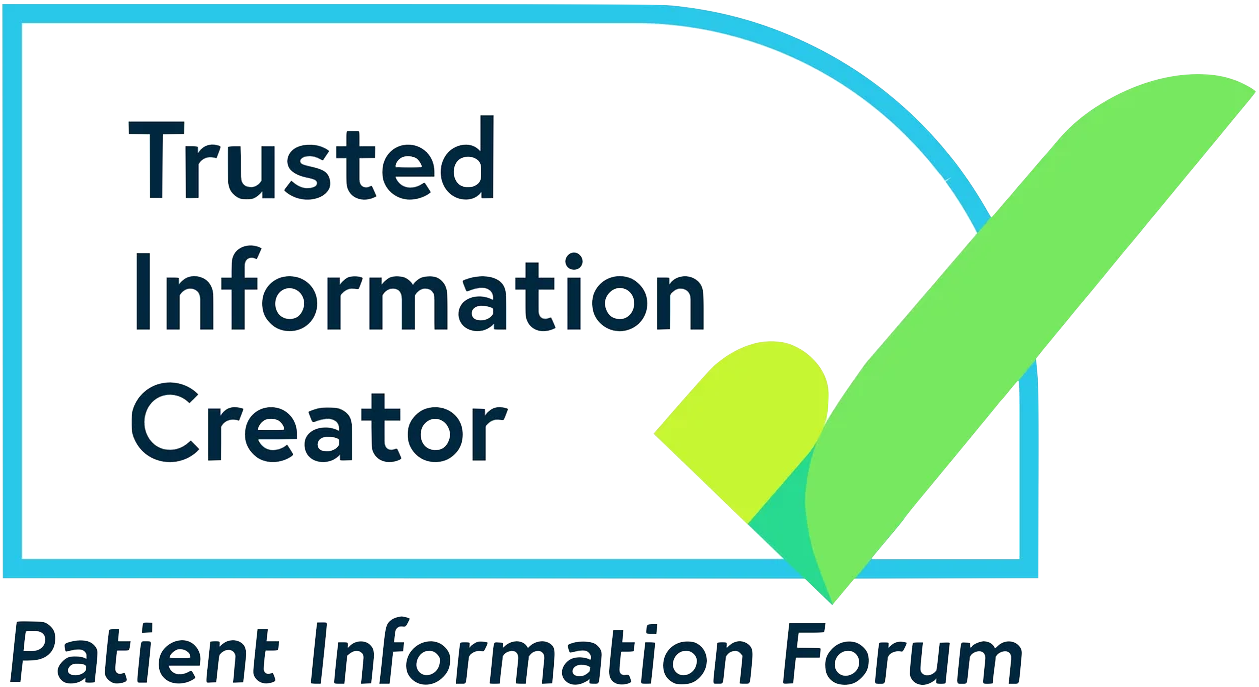Information about status epilepticus
Key points
- Call an ambulance if you think someone is in status epilepticus
- Status epilepticus can happen to people with epilepsy and people who have never had a seizure before
- Status epilepticus may be convulsive (tonic-clonic) or non-convulsive
- Some people experience tonic status epilepticus (TSE)
- Convulsive status epilepticus is a life-threatening medical emergency. You will need treatment as soon as possible
- You may be prescribed rescue medicine to treat status epilepticus if your doctor thinks you are at risk
- Rescue medicine should only be given by someone who has been trained
- If you have epilepsy, it is important to have an up-to-date care plan so those around you know what to do if status epilepticus happens
What is status epilepticus?
Most people with epilepsy have seizures that last a short time and stop by themselves. Status epilepticus is when these seizures do not stop.
Status epilepticus can happen to people with epilepsy. It can also happen to people who have never had a seizure before and is caused by another condition.
It is sometimes shortened to ‘status’.
Non-epileptic seizures can often go on for longer and can be confused with status epilepticus.
Convulsive status epilepticus
This is when:
- a tonic-clonic seizure doesn’t stop within 5 minutes or in the usual time, or
- when someone has tonic-clonic seizures one after another without recovering in between
Convulsive status epilepticus is a life-threatening medical emergency. You will need epilepsy medicine as soon as possible.
Non-convulsive status epilepticus
This can happen when a non-convulsive seizure lasts longer than 10 minutes.
Examples of non-convulsive seizures include absence or focal impaired awareness seizures.
Non-convulsive status epilepticus can be harder to spot because the signs and symptoms can be less obvious. You may:
- Have limited or no movement symptoms
- Be confused
- Have a change in personality
- Experience psychosis
Non-convulsive status epilepticus can sometimes follow convulsive status epilepticus.
It can be unharmful or very serious, depending on the cause of the seizure.
You will need to be assessed by a healthcare professional and have an EEG (electroencephalogram) test to diagnose non-convulsive status epilepticus.
Tonic status epilepticus
Tonic status epilepticus happens when a person has repetitive tonic seizures. This may last for days, weeks and rarely even months.
This mostly happens in children with decreased mental function and severe epilepsy, such as Lennox-Gastaut syndrome.
What do I do if I think someone has status epilepticus?
Call an ambulance if you think someone is in status epilepticus.
The person in status may have an emergency management plan or care plan (see below). If so, you should follow the instructions outlined in their plan.
This plan may include giving them their prescribed rescue medicine. You should only give someone rescue medicine if you have been trained to do so.
Find out more about first aid for seizures.
How common is status epilepticus?
It is difficult to know exactly how many people with epilepsy will have an episode of status epilepticus. This is because research studies often look at different populations.
One study estimated that around 1 in 7 (15%) of people with epilepsy may go to hospital with status at some point
Status is more common in men.
Convulsive status epilepticus is more common than non-convulsive status epilepticus.
How will status epilepticus affect me?
Convulsive status epilepticus is a life-threatening neurological condition. This means that some people may die during an episode. This may be more likely:
- If a person is more than 65 years old
- If a person has more than one medical condition
- If the brain is starved of oxygen for too long during status
All types of status can cause brain damage.
There are ways to reduce your risk of status epilepticus. This includes taking your epilepsy medicine as it has been prescribed. You may also be given rescue medicine to take if you have an episode of status.
The earlier you are treated for status epilepticus, the more successful it is likely to be.
You may have some health problems while recovering from status epilepticus. These may improve over time, but not always. This includes:
- Speech and language problems
- Loss of muscle control
- Movements you cannot control
- Memory problems
- Behavioural problems
Your recovery will depend on various things including:
- What caused the status epilepticus
- How long the seizures lasted
- Your age
- If you have any other medical conditions
- What treatment you had
What causes status epilepticus?
Status epilepticus has different causes.
In people with epilepsy, one of the most common causes of status epilepticus is having low epilepsy medicine levels.
Other causes in adults with or without epilepsy include:
- Stroke
- Metabolic disorders, such as diabetes
- Alcohol abuse or withdrawal
- Brain injury or head trauma
- Using recreational or illegal drugs, such as cocaine and amphetamines
- Central nervous system infections, such as meningitis
You are more likely to experience status if you have drug resistant (refractory) epilepsy with focal onset seizures.
How can I reduce my risk of status epilepticus if I have epilepsy?
There are some ways to reduce your risk of having status epilepticus.
- Always take your epilepsy medicine as prescribed and try not to miss any doses
- Do not stop taking your medication suddenly without speaking to your epilepsy specialist
- Make sure you have rescue medicine if you have cluster or prolonged seizures. Cluster seizures are defined as typically 3 or more seizures that stop by themselves in 24 hours
- Speak to your epilepsy specialist if you have noticed changes in your seizure pattern or experienced a different type of seizure
- It’s important that you have access to the right treatment and care. This will help you manage your condition well. Find out what should happen at every stage of your epilepsy treatment where you live
- Try to limit the amount of alcohol you drink. Alcohol withdrawal after drinking too much can be a trigger for status epilepticus. There is support available if you need help to stop drinking. Independent charity Drinkaware has more information
- Don’t use illegal or recreational drugs, such as cocaine or amphetamines
- Try to avoid anything that triggers your seizures, including a lack of sleep
- Make sure you are managing any other conditions well, such as diabetes
- Talk to your epilepsy specialist if you are worried about status epilepticus
Some people with epilepsy carry or wear medical ID in case they have a seizure when out and about.
Any questions?
Our expert advisors can help you with any questions you might have about emergency treatment or anything else related to living with epilepsy.
What is the treatment for status epilepticus?
Doctors in hospital can use several medicines to stop status epilepticus. These will likely be given through a drip in your arm (intravenously).
You may be referred to the neurology department for more tests.
Emergency medical services (paramedics) also carry medicine so they can start treatment as soon as they arrive.
Emergency management plans for status epilepticus
The National Institute for Health and Care Excellence (NICE)< says that everyone with epilepsy should have an emergency management plan or care plan. A care plan is an agreement between yourself and your healthcare professional. Your family or carers may be involved too.
Your care plan should include:
- What care you need in an emergency
- Any rescue medicine you have been prescribed for emergencies
- Who is trained to use it
- When to give it
You can download a Care Plan and Review template from our website.
Rescue medicine
If you are at risk of status epilepticus you may be prescribed emergency or rescue medicine. This is to stop the seizure before it causes any long-term complications.
This medicine will become part of your own emergency management plan.
If you are in status epilepticus and you have an emergency management plan, someone needs to give you the medicine immediately. This person must be trained to administer this medicine.
You may not need to go to hospital if this medicine works and you recover well.
Make sure you keep your rescue medicine with you. This should be in a safe place and away from children.
Types of rescue medicine
There are two main types of rescue medicine licensed for use in the UK in a status emergency.
Buccal midazolam
This is given by plastic syringe, between the person’s gums and cheek. Brand names include Buccolam and Epistatus.
Find out more about buccal midazolam
Rectal diazepam
This is given rectally (inserted into the bottom). Brand names include Diazepam RecTube and Stesolid
NHS has more information about diazepam.
Both these medicines are sedatives. They work in the brain to stop seizures but can also make you feel sleepy.
It is rare, but sedatives can also cause breathing problems. You will need to be watched closely while you recover.
Rectal paraldehyde
Some children may be prescribed this as a rescue medicine. This is inserted into the bottom.
Great Ormond Street Hospital for children has more information about paraldehyde.
How can I get training to give rescue medicine?
You need to be trained to give rescue medicine to someone in a status emergency. An epilepsy specialist nurse or community nurse will usually give you this training. Tell the nurse if other people, such as school staff, may need to give the rescue medicine. The nurse may be able to train them as well. Schools may also be able to arrange training through their school nurse or local community nursing team.
We have a list of rescue medicine training providers.
Individual Healthcare Plans (IHP) in schools
Your child’s school must have a policy that outlines what to do if your child needs rescue medicine while at school.
They should outline what to do in an emergency in your child’s Individual Healthcare Plan (IHP). This is a written plan with information about your child’s epilepsy and the support they need at school.
Find out more about support at school for people with epilepsy
-
Sources
Clinical Knowledge Summaries (November 2024) Epilepsy Available at: Definition | Background information | Epilepsy | CKS | NICE
BMJ Best Practice (2023) Status Epilepticus Available at: Status epilepticus (Accessed: 16 December 2024)
Leitinger, M. (2019) Epidemiology of status epilepticus in adults: A population‐based study on incidence, causes, and outcomes Epilepsia, 60(1), pp. 53–62. Available at: https://doi.org/10.1111/epi.14607
Vinayan, KP (2023) Tonic Status Epilepticus Tonic status epilepticus (TSE) | Neurology (Accessed: 10 January 2025)
Craig, D.P., et al (2020) ‘A tiered strategy for investigating status epilepticus’, Seizure, 75, pp. 165–173. Available at: https://doi.org/10.1016/j.seizure.2019.10.004
Trinka, E. et al. (2023) ‘Mortality, and life expectancy in Epilepsy and Status epilepticus—current trends and future aspects’, Frontiers in Epidemiology, 3, p. 1081757. Available at: https://doi.org/10.3389/fepid.2023.1081757
NICE (2022)Epilepsies in children, young people and adults: Information and support Available at: https://www.nice.org.uk/guidance/ng217/chapter/2-Information-and-support (Accessed: 23 December 2024).
British National Formulary Status epilepticus Available at: https://bnf.nice.org.uk/treatment-summaries/status-epilepticus/ (Accessed: 16 January 2025).
British National Formulary. Midazolam. Midazolam | Drugs | BNF | NICE(Accessed: 7 January 2025)
British National Formulary. Diazepam. Diazepam | Drugs | BNF | NICE (Accessed: 7 January 2025)
British National Formulary. Paraldehyde. Paraldehyde | Drugs | BNFC | NICE (Accessed: 7 January 2025)






